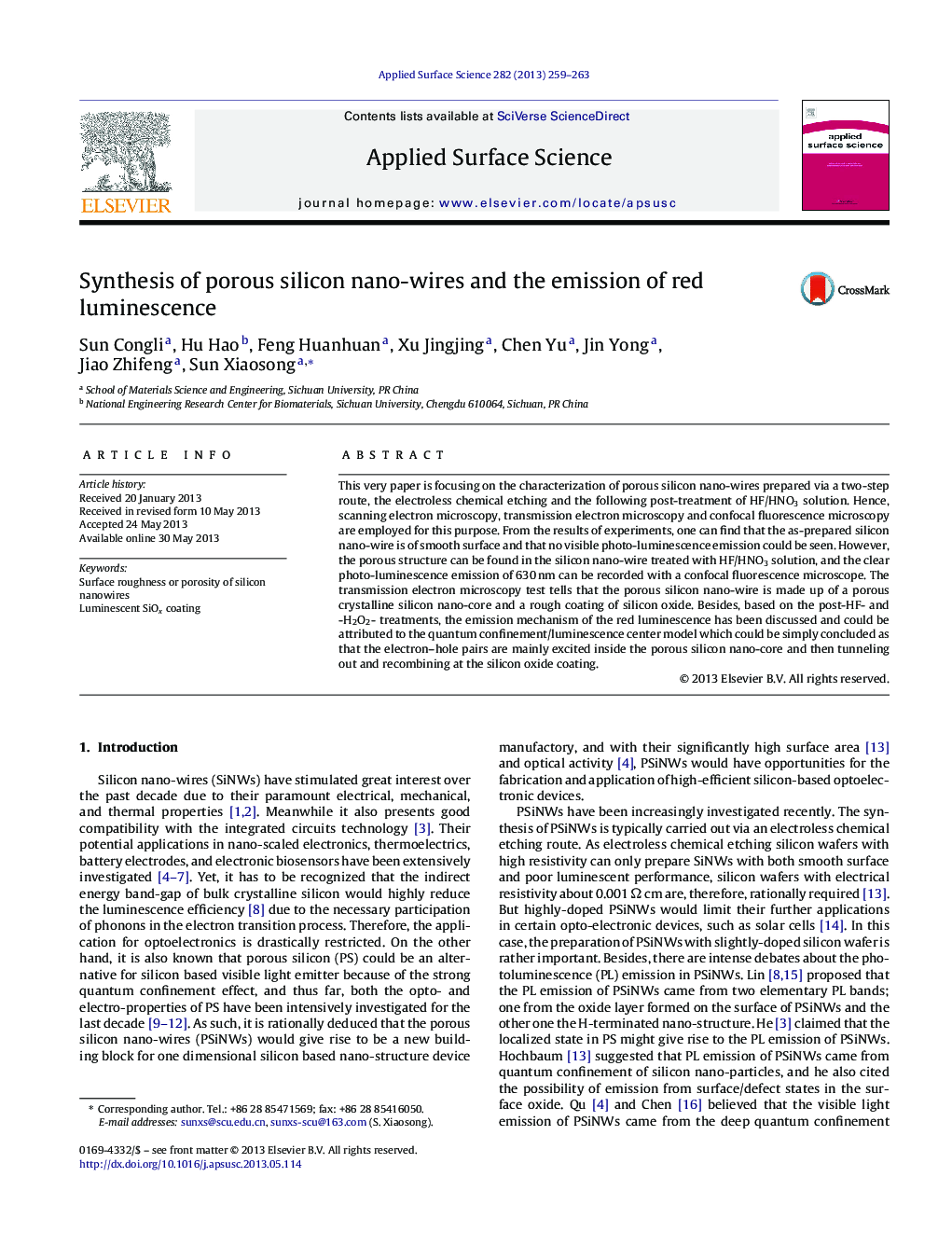| Article ID | Journal | Published Year | Pages | File Type |
|---|---|---|---|---|
| 5359696 | Applied Surface Science | 2013 | 5 Pages |
Abstract
This very paper is focusing on the characterization of porous silicon nano-wires prepared via a two-step route, the electroless chemical etching and the following post-treatment of HF/HNO3 solution. Hence, scanning electron microscopy, transmission electron microscopy and confocal fluorescence microscopy are employed for this purpose. From the results of experiments, one can find that the as-prepared silicon nano-wire is of smooth surface and that no visible photo-luminescence emission could be seen. However, the porous structure can be found in the silicon nano-wire treated with HF/HNO3 solution, and the clear photo-luminescence emission of 630Â nm can be recorded with a confocal fluorescence microscope. The transmission electron microscopy test tells that the porous silicon nano-wire is made up of a porous crystalline silicon nano-core and a rough coating of silicon oxide. Besides, based on the post-HF- and -H2O2- treatments, the emission mechanism of the red luminescence has been discussed and could be attributed to the quantum confinement/luminescence center model which could be simply concluded as that the electron-hole pairs are mainly excited inside the porous silicon nano-core and then tunneling out and recombining at the silicon oxide coating.
Related Topics
Physical Sciences and Engineering
Chemistry
Physical and Theoretical Chemistry
Authors
Sun Congli, Hu Hao, Feng Huanhuan, Xu Jingjing, Chen Yu, Jin Yong, Jiao Zhifeng, Sun Xiaosong,
